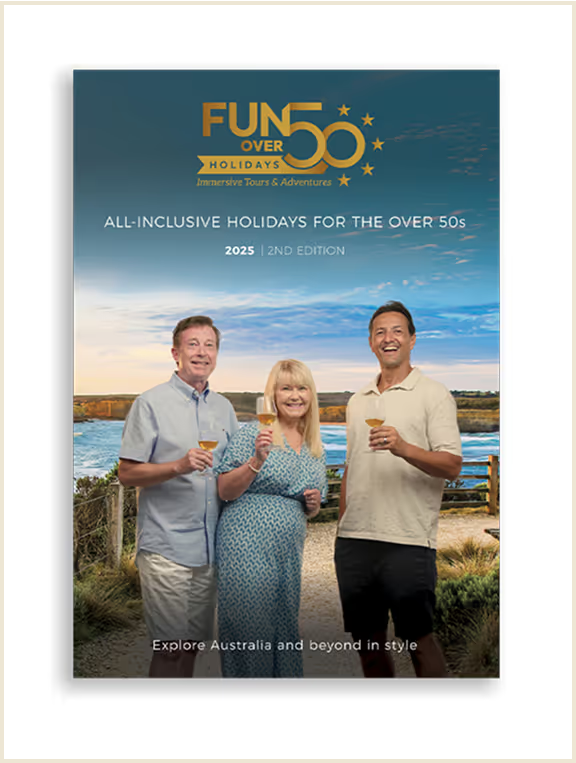Tour destinations
Responsible tourism


Shell Beach near Denham in WA is one of the many amazing natural attractions of the Shark Bay World Heritage area. Made up of billions of tiny shells from a single species, Shell Beach is one of only two shell beaches in the world. The dazzling white shells stretch for 60km and in some parts are as deep as ten metres!
These tiny, empty shells that make Shell Beach so unique were once home to the Fragum cockle or Shark Bay Cockle, a small, burrowing mollusc only found in Western Australia. In the early 1900s, the shells were quarried, hard packed, cut into blocks, and used to construct a number of historic buildings in the nearby town of Denham.

Take the first step toward your next adventure—explore our tours or get a free brochure sent to your inbox.
Shell Beach lies at the Southern End of L'Haridon Bight, one of the bays on the eastern side of the Peron Peninsula in the Shark Bay World Heritage Site. The waters in this area and nearby Hamelin Pool are twice as salty as the sea and the Fragum cockle can live in this very salty water. As its predators can’t survive here, these little molluscs thrive, hence the abundance of this one species.
For thousands of years, the tiny cockles with their translucent, bivalve shells have propagated, flourished, and died. Their shells have continually washed up onto the shore to create the brilliant pure white Shell Beach that stretches for miles, contrasting starkly with the bright blue bay waters.
If you visit Shell Beach or take a Shell Beach tour, you can read the cockle’s story on the interpretive signs along the short walk between the carpark and the beach.


Estimates put the number of shells on Shell Beach into the billions, some say trillions. The volume of cockle shell matter produced at Shell Beach is so large that it becomes compressed into a special form of limestone called coquina. Limestone was a valuable resource that was mined and used to construct buildings in the nearby town of Denham in the early 1900s.
Its importance as one of the world's greatest wilderness wonderlands, Shark Bay was the first location in Western Australia to receive UNESCO World Heritage status in 1991. Two years later, Shell Beach became a conservation park, the first of its kind in the midwest region of WA.
Today, special licenses are still granted to mine the shells as a source of calcium for mulch and poultry feed and the activity of mining coquina is strictly controlled, and blocks can only be cut to repair the existing buildings.
Yes! The water at Shell Beach is clear, shallow, and inviting. It’s very salty (hypersaline) like the Dead Sea in Jordan, making it easy to float. Make sure you cover any cuts or abrasions, or they may sting in the salty water.
Be sure to wear thongs or reef shoes on the beach and in the water to protect your feet from the sharp shells.
Shells are classified as fish under the Fish Resources Management Act because they were once part of a living organism and visitors are allowed to take them for their private collections but are not allowed to sell them. Coral and live rock are protected species so cannot be collected or sold.
Collecting more than 10kg per person per day requires a permit and unless you have a shell collecting license, or you buy your shells from a licensed collector, you can't sell anything with a shell on it.
Somerset Creek Beach is a 1.6-kilometre-long beach on Andros Island, an archipelago in the Bahamas. The beach has millions of tiny pastel-coloured shells as well as sand dollars, conchs, and other species.
Our team is always happy to help if you have any questions about us or our tours. Fill out our form and we will get back to you soon.